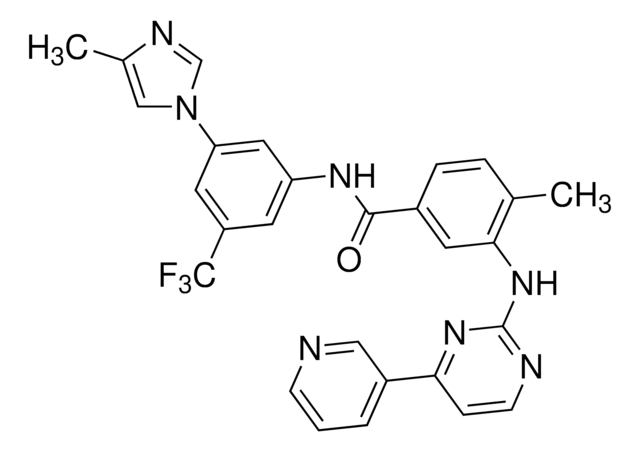SML0421
SB265610
≥98% (HPLC)
Synonym(s):
1-(2-Bromophenyl)-3-(4-cyano-1H-benzo[d] [1,2,3]triazol-7-yl)urea, N-(2-Bromophenyl)-N′-(7-cyano-1H-benzotriazol-4-yl)urea, SB 265610
About This Item
Recommended Products
Quality Level
assay
≥98% (HPLC)
form
powder
color
white to light brown
solubility
DMSO: 15 mg/mL, clear
storage temp.
2-8°C
SMILES string
Brc1ccccc1NC(=O)Nc2ccc(C#N)c3nn[nH]c23
InChI
1S/C14H9BrN6O/c15-9-3-1-2-4-10(9)17-14(22)18-11-6-5-8(7-16)12-13(11)20-21-19-12/h1-6H,(H2,17,18,22)(H,19,20,21)
Inchi Key
SEDUMQWZEOMXSO-UHFFFAOYSA-N
Application
- as a cysteine-amino acid-cysteine (CXC)-chemokine receptor type 2 (CXCR2) antagonist to study its effects on the binding of chemokine with G-protein coupled receptors (GPCR)
- as a CX-chemokine receptor type 1 (CXCR1) inhibitor to study its effect on the chemotactic activity of chemokines on inflammatory cells
- as a CXCR2 antagonist to study its effect on migration of neutrophils to the rat brain
Biochem/physiol Actions
Features and Benefits
signalword
Warning
hcodes
Hazard Classifications
Acute Tox. 4 Oral
Storage Class
11 - Combustible Solids
wgk_germany
WGK 3
flash_point_f
Not applicable
flash_point_c
Not applicable
Certificates of Analysis (COA)
Search for Certificates of Analysis (COA) by entering the products Lot/Batch Number. Lot and Batch Numbers can be found on a product’s label following the words ‘Lot’ or ‘Batch’.
Already Own This Product?
Find documentation for the products that you have recently purchased in the Document Library.
Articles
We offer many products related to chemokine receptors for your research needs.
Our team of scientists has experience in all areas of research including Life Science, Material Science, Chemical Synthesis, Chromatography, Analytical and many others.
Contact Technical Service









